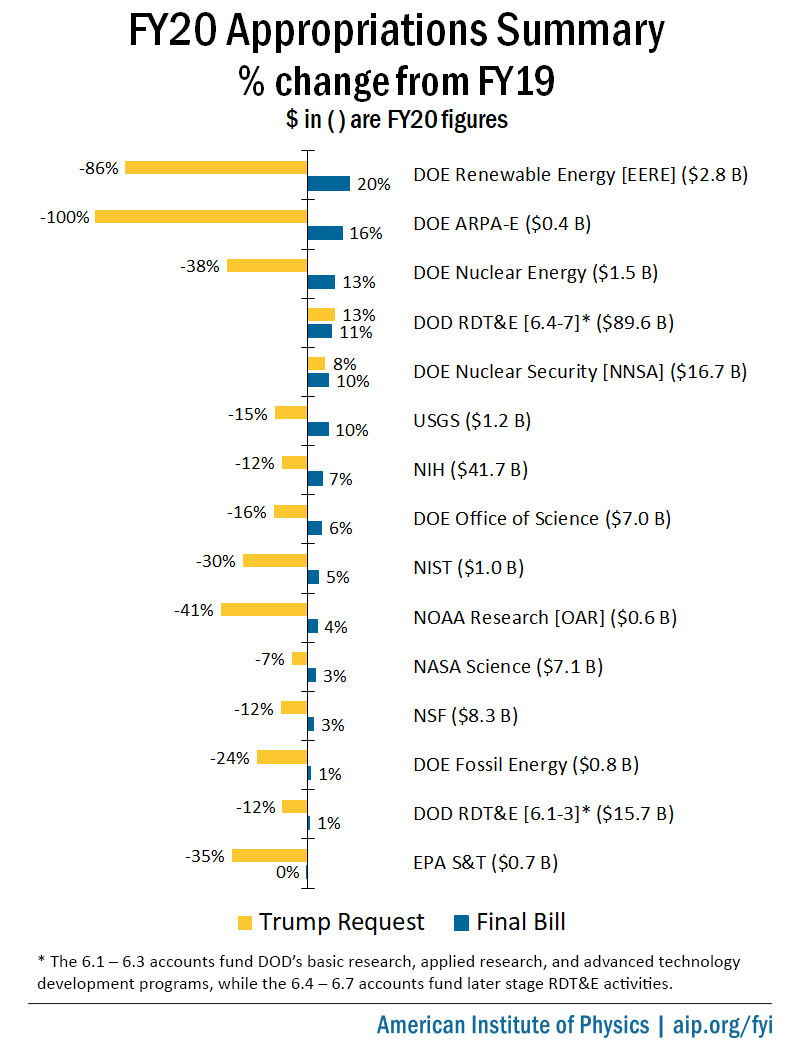Keep your eye on the ball here. The executive branch administers budgets that have been passed. It has no power over budgets that have not been passed (other than they can make their priorities clear). Deciding on the money is all about Congress.
Also, do not be in denial about this. All elected officials like government spending. It is their job to spend other peoples’ money. What’s not to like?? Here is the convention I use: both parties like to spend more, but the Democrats might like it a bit better, while both parties like to cut taxes, but the Republicans might like that a bit more.
Anyway, for about 2 generations now (Trump, Bush II, Bush I, and Reagan), the legacy media and Democrats have been selling the idea that various government programs have been severely cut by Republicans. Not so. Republicans in the executive branch propose this sort of thing, but both parties in Congress can usually agree to spend more on just about everything, just about every time.
******************************************************
This is also a good time to clarify two bits of the language of federal budgets and macroeconomics that get everyone (including economists) goofed up.
First, in the U.S., some spending is discretionary and some is non-discretionary.
Discretionary spending is chosen and voted for every year. It can be cut, but it usually isn’t. Only a quarter of federal spending is discretionary.
Non-discretionary spending is set by a formula. The formulas are written in to laws, and can only be changed by writing a law that removes the old one and replaces it with a new one. Doable, but not easy or common. The other 75% of the federal budget is non-discretionary.
Second, the name for all federal spending is outlays, but, the part that is measured in GDP is smaller than that.
Outlays include all spending including transfer payments. It’s just under $5T. But transfers are about 2/3 of that, and most of those are non-discretionary.
Government spending on goods and services is the fraction that’s in GDP. This is because it’s spending. When we measure spending we measure it by who makes the decision about what to spend. Most transfers go as checks to households, who decide what to spend it on. So it gets counted as consumption.
In any variation on Keynesian theory, including the bastardized-Keynesianism practiced by elected officials of all parties basically everywhere … government spending on goods and services is the only one that can help the economy. Transfer payments are about being sensitive and empathic, and also about buying votes. But no one who is a macroeconomic professional claims that transfers do anything for the macroeconomy. Politicians love to tell us about the programs they’ve created, and how they’ll help the macroeconomy, but if those programs don’t buy goods and services they won’t. There’s just no support for that. Unfortunately, it’s a bait and switch, and politically, it works.
******************************************************
So what about Trump’s budget? The Washington Post has a good article about this, with excellent graphics, entitled “What Trump Proposed In His 2021 Budget”. It shows that the Trump White House wants to cut a majority of stuff. And it shows you that of the budget items, defense is the largest already, and the White House wants to increase that a little. What it does not tell you is that they are only reporting on the 1/4th of the budget that’s discretionary. If you worry about the overall size of the federal budget (outlays) … they pulled a sleight of hand and slipped it right by you unnoticed.
But a lot of the discussion is at the level of the op-ed piece by Margot Sanger-Katz in The New York Times entitled "What’s in President Trump’s Fiscal 2021 Budget?" She focuses on outlays. But then says things like this:
The president’s plan includes about $2 trillion in cuts to safety net programs and student loan initiatives. Those reductions encompass new work requirements for Medicaid, federal housing assistance and food stamp recipients, which are estimated to cut nearly $300 billion in spending from the programs. The budget would also cut spending on federal disability insurance benefits by $70 billion and on student loan programs by $170 billion.Ummm … no. Just no.
Honestly, I wonder if she snuck a rhetorical trick into that first sentence. As written, it is false. Change the order of the words from “… about $2 trillion in cuts to …” to “… cuts to about $2 trillion in …”, and it’s correct. Ooooh. That’s sneaky, eh?
******************************************************
So, what’s the reality? This graphic is just for science-ish spending, but it applies more broadly. Deep cuts are proposed, and Congress then passes big non-cuts:
The bottom line is that going forward you should keep your eye on actual data rather than media discussions of proposals. Watch what they do, not what they say.

No comments:
Post a Comment